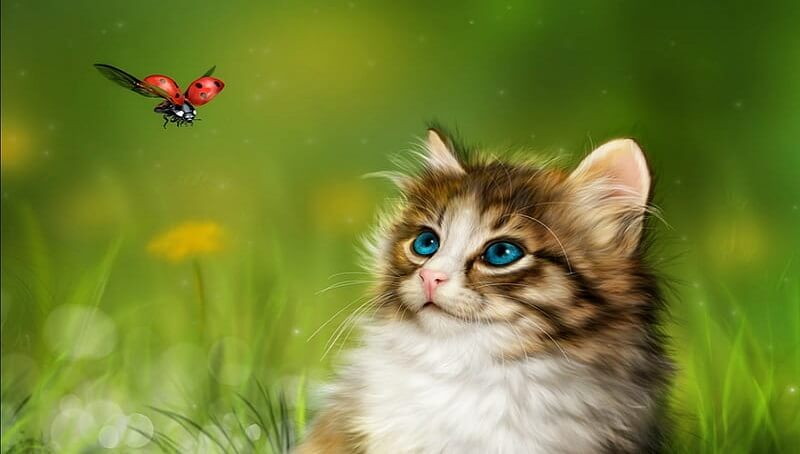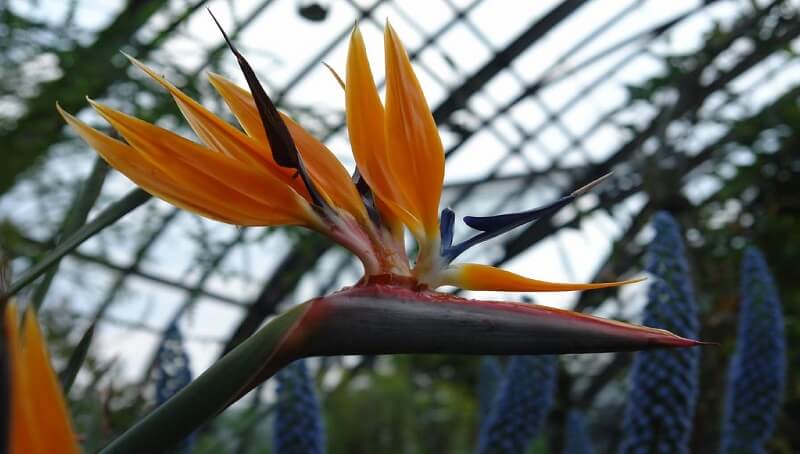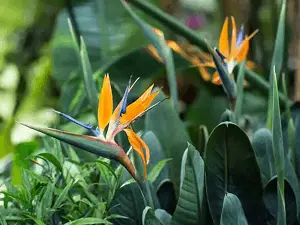
Can Dogs eat Alfredo Sauce? What Are The Risks?
April 26, 2022
Are Ladybugs Poisonous to Cats? What About Asian Lady Beetles?
April 26, 2022
Most people love the vibrant ornamental display that these plants offer to your home. Their glamour and lively colors make these flowers look like very colorful birds, but are they of any danger to your cat?
Although Birds of paradise are lovely decorative houseplants, they can be really tough on your pet friend’s health.
Several different ornamental plants share the name Bird of Paradise. They are Caesalpinia pulcherrima (flamboyant-de-Jardin, Flos Pavonis, dwarf poinciana, the pride of Barbados, poinciana, peacock flower, or red/Mexican bird of paradise), Erythrostemon gilliesii (Barba de chivo, yellow/the bird of paradise push or desert bird of paradise), or genus Strelitzia (crane flowers).
Strelitzia will be found in one of its five known species. Two of these species are known house plants and are called S. Nicolai S. reginae (the giant white bird of paradise or wild banana) and the other three are not considered ornamental flowers and will be named i.e., S. juncea (narrow-leaved bird of paradise or rush-leaved Strelitzia), S. caudata (wild banana or mountain strelitzia), and S. alba (Cape wild banana or white-flowered wild banana).
An interesting fact is that Erythrostemon and Caesalpinia pulcherrima are actually part of the pea family. Strelitzia, on the other hand, is part of the birds-of-paradise family of plants called Strelitziaceae.
You might also like my articles on whether ladybugs, Aglaonema, and Mayo are safe for cats.
Are birds of paradise toxic or safe for cats?
These plants will feature some amazing blue base petals that arise from dark green spathes, which are in an upright fan of bright orange sepals. The leaves are evergreen and waxy and resemble banana leaves, but with pretty long stalks that sit upright and are attached to underground stems called rhizomes. They are very beautiful houseplants to own.
The short answer is Yes, the bird of paradise plants are very toxic to cats, but also to dogs and horses, with the highest toxicity coming from the fruits and the seeds of the plants, which could cause gastrointestinal irritations. The good news is that these plants will almost never bloom when kept indoors, which means that their toxicity would usually be considerably lower.
The most common symptoms of poisoning in cats will be vomiting, drowsiness, and mild nausea. This plant will also show some mild symptoms to people, but only when ingested in considerable amounts.
If you think that your cat might have eaten some Strelitzia seeds or fruits and you notice it having any of the symptoms I went through above, then you should take it to your vet as soon as possible for consultation and possible treatment.
I would suggest that you avoid these plants, along with dumb canes, snake plants, jade plants, Monstera Deliciosa, aloe vera, Schefflera, pothos, English ivy, chrysanthemums, amaryllis, sago palms, lilies, and other harmful plants if you’re a pet lover.
If you really need to have these plants inside your home, you should find ways of preventing the cat, dog, or other pets from getting to the bird of paradise plants. One of the easiest ways is by getting a cat-proof terrarium. Training your cat to avoid eating these plants also works, along with getting cat deterrents and repellents. You can even find safer alternative plants your cat can play with.
Even though you will make sure that your cat avoids this plant, the fact that it grows pretty large may make all of your efforts pretty ineffective. The easiest way of keeping your pet safe is by avoiding this type of plant in your home and going for safer alternatives like the Christmas cactus, the maidenhair fern, money tree, wax plant, Rattlesnake plant, pheasant plant, Peperomia, Goldfish plant, or friendship plants, among many others.
Caesalpinia and Erythrostemon gilliesii are very toxic
These two types of birds of paradise are even more toxic than the rest and should be avoided at all costs. Not only their seeds but also their seed pots are extremely toxic for your pet.
The Erythrostemon gilliesii was previously known as Caesalpinia gilliesii. This plant has a lot of hydrocyanic acid which is very toxic to cats and dogs and can cause symptoms like swallowing difficulties, poor coordination, vomiting, diarrhea, drooling, oral irritation and irritation around the lips and tongue, and even intense burning. It has been lethal for smaller pets like bunnies.
On the other hand, the peacock flower or Caesalpinia pulcherrima is very toxic to cats mainly because it has GI and irritants and tannins that lead to vomiting and diarrhea.
First Aid Treatment from Bird of Paradise Poisoning
 You should seek the help of a veterinarian as soon as possible if you think your cat has eaten any parts of the Bird of paradise plant.
You should seek the help of a veterinarian as soon as possible if you think your cat has eaten any parts of the Bird of paradise plant.
If you notice any symptoms of poisoning in your cat you should take it to a clinic as soon as possible, even if you didn’t see whether the cat has eaten parts of this plant or not.
If you don’t know a veterinarian that can help, you can contact the poison control hotline: The Pet Poison Helpline – 1 (855) 764-7661
Before you call, make sure you have information like the weight, gender, age, and breed of your cat, along with any symptoms they show and the toxin you think they swallowed, to make the phone call more productive.
There are a few things you can do until the veterinarian comes to your place, and these are:
- If your cat is shaking or unconscious, wrap it in a blanket.
- If your cat has fainted or is very weak take it outside or in an open place with enough fresh air and light. The cat will use some fresh air and some other symptoms might be visible in a better light.
- Remove any leftover plant parts from around the cat’s mouth, from its hair, or its skin.
- Try to induce vomiting if you think your cat has just recently swallowed the plant. If you never induced vomiting in a cat before, ask the veterinarian about this beforehand.
- Do not induce vomiting if you don’t know when the cat has ingested the plant or more than an hour has passed since then.
- Don’t feed your cat anything other than what the vet recommends.
- You can give your cat some fresh water to drink if your vet is OK with this and the cat is awake and seems to be fine.
While you’re taking these steps, also prepare your pet to be transported to a close-by clinic.
You should NEVER wait for the symptoms to get worse before you do something.
